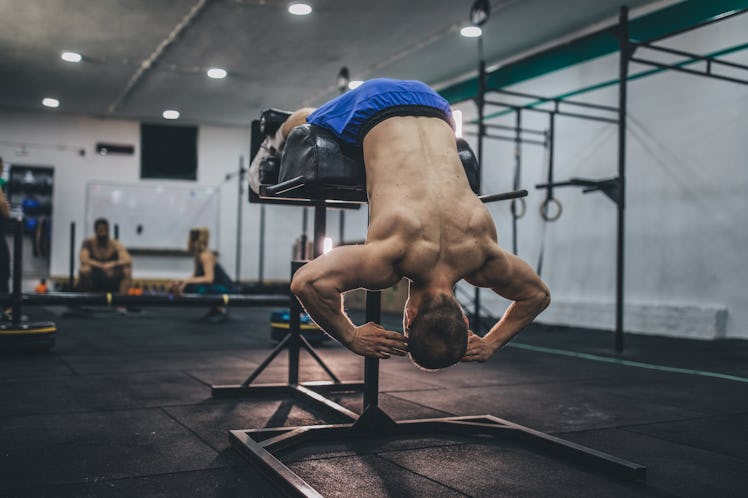Injury-Proof Your Lower Back With This Killer Workout
Lower back injury is always a looming threat. Here's how to keep yours healthy.

We all hear that voice in our heads, the one that tells us that the next piggyback or overloaded suitcase carry could be the one that tweaks our back. It makes sense: The last thing we want is a nagging injury that prevents us from being active participants in our kids’ lives, and lower back injury is always a looming threat. Well, it is if you don’t take precautionary measures.
“Dads injure their backs in two ways; actively and passively,” says Chris Stevenson, CSCS, international fitness speaker, and owner of Stevenson Fitness in Oak Park, California.
“Active injuries happen when your back is not strong enough or flexible enough for the activities you are trying to do.” It might be picking up your child or a heavy bag of groceries. Maybe it is swinging your golf club or landing hard after a rebound.
As for passive injuries? “Passive back injuries happen due to lifestyle,” explains Stevenson. “This means you’ve developed bad posture over time, and have probably spent a lot of time sitting.” By taking your spine out of its ideal alignment, bad posture shortens certain muscles, while overstretching others. “It can also cause uneven pressure on the spinal discs, which can lead to compression,” Stevenson adds.
Maintaining a strong, healthy lower back comes from strengthening and stretching on a regular basis. “When it comes to strength training for your lower back, you need to work the movement muscles and the stabilizing muscles,” Stevenson explains.
Here’s a program from Stevenson that does precisely this by directly addressing the muscles in the lower back, hips, and core. “These exercises all work together, with most of the muscles in the actual lower back working as stabilizers and during small movements, and the abs and hips combining for larger movements and heavy workload.”
The Lower Back Workout
All exercises should be performed with medium weight.
Deadlifts
4 sets of 8-10 reps
Back Extension
4 sets of 8-10 reps
Bar Hip Lifts
4 sets of 10 reps
Crunches
4 sets of 15 reps
Russian Twists
4 sets of 15 reps (lightweight)
Planks
3 sets, holding for 60 sec
Stretching For A Strong Lower Back
Stevenson also recommends stretching and foam rolling to help with flexibility and range of motion, which will both lead to a stronger, more flexible back.
“When stretching, you should focus on stretching muscles like the glutes, hamstrings, piriformis, and hip flexors,” he says. “Do three to five reps of each stretch holding each rep for at least 15 but no more than 30 seconds.” When you foam roll, Stevenson advises focusing on the glutes,
When you foam roll, Stevenson advises focusing on the glutes, quads, and hamstrings, and rolling up and down the spine. “Start at the top of your spine just below the neck and roll to the bottom of the lowest rib. Stay off the actual lower back area,” he cautions. “It’s too sensitive. So, even if it seems to feel good, it’s best to avoid.” Stevenson recommends five to 10 slow controlled rolls up and down each muscle.
Posture Fixes
And as for that pesky posture, Stevenson preaches occasional movement and paying attention to how you’re actually sitting or standing. “We need to make sure that we never sit for more than 60 minutes at a time,” he says. “When we are sitting we need to make sure that our ergonomics are correct. Make sure you have a good chair that supports you and allows you to sit up properly with your feet on the floor.” When you do have to sit, there’s definitely a correct way to do it. “Pay attention to your posture all day long,” says Stevenson. “Try and keep your shoulders back and your navel drawn in. This stabilizes the spine and protects as a whole – including that lower back.”
“We need to make sure that we never sit for more than 60 minutes at a time,” he says. “When we are sitting we need to make sure that our ergonomics are correct. Make sure you have a good chair that supports you and allows you to sit up properly with your feet on the floor.” When you do have to sit, there’s definitely a correct way to do it. “Pay attention to your posture all day long,” says Stevenson. “Try and keep your shoulders back and your navel drawn in. This stabilizes the spine and protects as a whole – including that lower back.”
This article was originally published on